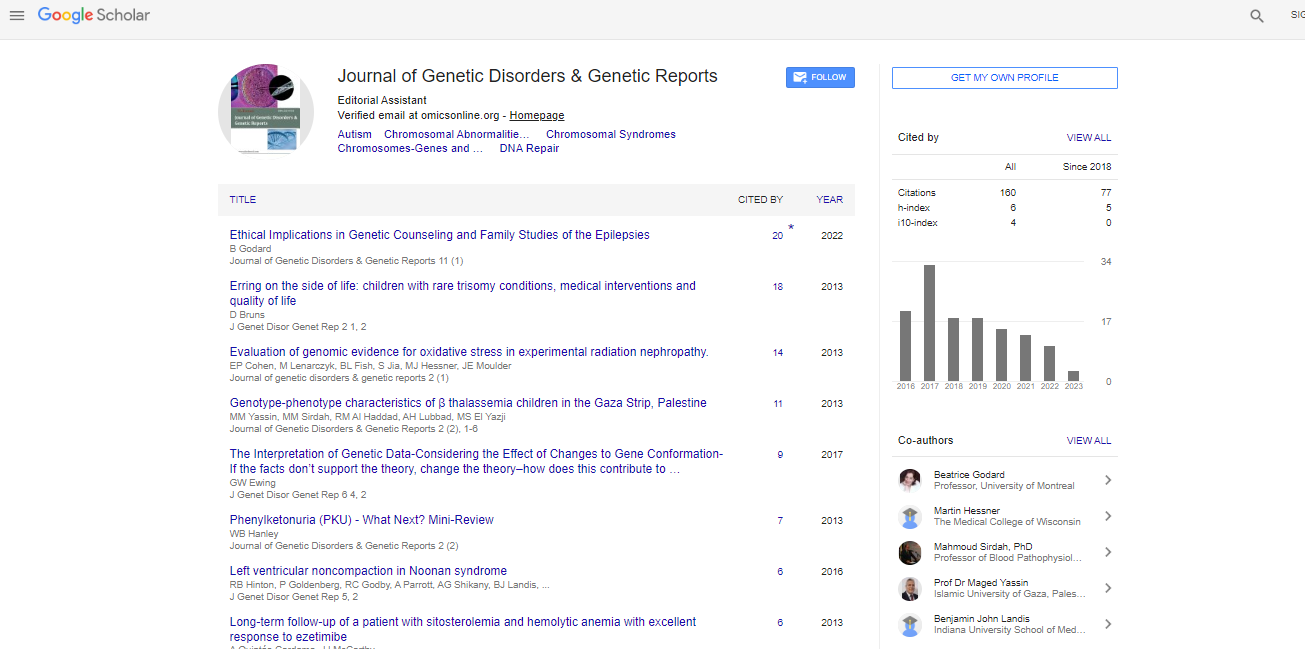Case Report, J Genet Disor Genet Rep Vol: 5 Issue: 2
Variation of Abnormal Hemoglobins Concentrated in Durg, Chhattisgarh: A Brief Note Based on Cross-Sectional Study
| Devendra Lingojwar1,2,4*, Pramod Gupta2, Savita Bhutoria4, Sarita Lingojwar1,2, Nikhil Mishra3 and Anil Kumar3 | |
| 1ATG LAB, Biotechnology Research Laboratory, Ganesh Nagar, Pimple Nilakh, Pune, India | |
| 2RESEARCH (Regional Society for Education and Research in Community Health), Pune, India | |
| 3Department of Biotechnology, Govt. V.Y.T. PG. Autonomous College, G.E. Road, Durg Chhattisgarh, India | |
| 4Hematology Division, Department of Medicine, Albert Einstein College of Medicine, Bronx NY, USA | |
| Corresponding author : Dr. Devendra Lingojwar Hematology Division, Department of Medicine, Albert Einstein College of Medicine, Bronx NY, USA 10461 Tel: +1 7169512776 E-mail: dplingojwar@gmail.com |
|
| Received: April 25, 2016 Accepted: May 19, 2016 Published: May 19, 2016 | |
| Citation: Lingojwar D, Gupta P, Bhutoria S, Lingojwar S, Mishra N, et al. (2016) Variation of Abnormal Hemoglobins Concentrated in Durg, Chhattisgarh: A Brief Note Based on Cross-Sectional Study. J Genet Disor Genet Rep 5:2. doi:10.4172/2327-5790.1000135 |
Abstract
Prevalence of different abnormal hemoglobins (Hb) in Indian tribal and nontribal population groups is well established. Sickle cell hemoglobin (HbS) is mostly concentrated in Central and South Indian states, whereas HbD and Hb E is mostly found in North-North-West and North-North-East states respectively. HbJ, an alpha globin gene variant, is earlier reported in North India whereas; its presence in the tribal Chhattisgarh state is not well understood. HbE, a beta-globin gene variant was earlier reported in North Eastern states of India. Prevalence of both these abnormal hemoglobins in the Central India specifically in Durg, Chattisgarh is incompletely understood. In this study attempts were made to analyze the presence of abnormal hemoglobins during screening for sickle cell anemia. Briefly, blood samples (N=44) were analyzed for sickle cell anemia screening and confirmatory tests by solubility tests and cellulose acetate membrane electrophoresis at alkaline pH. Two samples showed an abnormal pattern of separation on cellulose acetate membrane other than HbS. Out of total 44 tested samples, five were sickle cell carriers (HbAS), one was heterozygous HbAJ and the another one was homozygous for HbE while remaining other were normal genotypes i.e. HbAA. In brief, a case of homozygous Hemoglobin E from Kurmi caste of other backward community (OBC) and a different heterozygote pattern, i.e. Hb AJ from Brahmin community is reported from Durg, Chattisgarh, Central India. This study provides possible indication of variation of different abnormal hemoglobins, other than HbS, present in the tribal state of Chhattisgarh.
 Spanish
Spanish  Chinese
Chinese  Russian
Russian  German
German  French
French  Japanese
Japanese  Portuguese
Portuguese  Hindi
Hindi 



